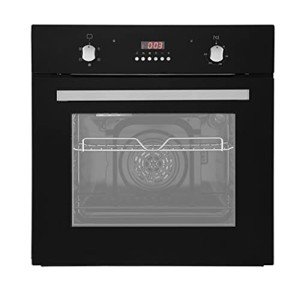The Comprehensive Guide to Built-In Ovens: Features, Benefits, and FAQs
Built-in ovens are a popular option for modern kitchen areas, providing versatility, effectiveness, and a smooth style that incorporates effortlessly into cabinetry. This article will look into the various aspects of built-in ovens, including their features, benefits, setup alternatives, upkeep suggestions, and responses to typically asked questions.
What is a Built-In Oven?
A built-in oven is designed to be set up within kitchen cabinets and is readily available in various setups, such as single or double ovens. Unlike freestanding ovens, built-in designs supply a streamlined appearance and provide more versatility in kitchen style. They are available in electric, gas, and steam choices, catering to a variety of cooking preferences.
Features of Built-In Ovens
Built-in ovens are packed with functions that enhance cooking experiences. Here are a few of the most common features to think about:
| Feature | Description |
|---|---|
| Self-Cleaning | Many models include a self-cleaning function that burns residue at heats, simplifying upkeep. |
| Convection Cooking | This feature utilizes a fan to flow hot air, cooking food more equally and rapidly. |
| Smart Technology | Some ovens come geared up with Wi-Fi connectivity, enabling users to manage the oven remotely through smartphone. |
| Multiple Cooking Modes | Consist of options such as baking, broiling, roasting, and air frying, providing flexibility for various dishes. |
| Temperature level Probe | Keeps track of the internal temperature of food, making sure perfectly cooked meals every time. |
| Streamlined Design Options | Offered in numerous surfaces (stainless-steel, black, white) to match kitchen decoration. |
Advantages of Built-In Ovens
The installation of a built-in oven brings various benefits to any kitchen:
- Space Efficiency: Built-in ovens take full advantage of kitchen area, providing a clean and organized appearance without compromising performance.
- Improved Cooking Performance: With sophisticated features like convection cooking and accurate temperature controls, built-in ovens often surpass conventional designs.
- Style Flexibility: These ovens can be installed at eye level, enabling for easy access without flexing down, which can be particularly useful for people with physical constraints.
- Improved Resale Value: A well-designed kitchen with top quality built-in appliances may interest prospective buyers, boosting total property worth.
- Customization Options: Many brands provide personalized designs that fit the specific measurements and aesthetic of private kitchens.
Installation Options
When choosing a built-in oven, comprehending the setup choices is vital. Here are the most common setups:
- Single Built-In Oven: Ideal for smaller sized kitchen areas, these units offer enough space to prepare a range of dishes concurrently, ideal for daily cooking.
- Double Built-In Oven: Best fit for passionate cooks and large households, double ovens permit for simultaneous cooking at two different temperatures, ideal for meals that need varied cooking techniques.
- Mix Steam and Oven: A hybrid service that combines the advantages of standard baking with steam cooking. This option is excellent for maintaining wetness in foods, making it ideal for baking bread or roasting meats.
Maintenance Tips for Built-In Ovens
Maintaining a built-in oven is necessary for its durability and optimal efficiency. Here are some useful upkeep pointers:
- Regular Cleaning: Use the self-cleaning function when essential, and clean down the outside and interior surfaces frequently to avoid grease buildup.
- Check the Seals: Inspect the oven door seals for any wear or damage to ensure appropriate insulation and cooking effectiveness.
- Temperature level Calibration: Occasionally evaluate the temperature precision utilizing an oven thermometer, specifically if cooking times appear longer than typical.
- Ventilation: Ensure appropriate ventilation around the oven to prevent getting too hot, particularly for built-in designs that might be surrounded by cabinetry.
Frequently Asked Questions About Built-In Ovens
1. Are built-in ovens more expensive than freestanding designs?Yes, built-in ovens tend to be more costly due to their style, setup requirements, and extra functions. However, their advantages can validate the cost in the long run.
2. Can you install a built-in oven yourself?While some helpful individuals might try to set up a built-in oven, it is suggested to hire a professional to ensure appropriate installation, ventilation, and security requirements.
3. What is the average life-span of a built-in oven?The normal life-span of a built-in oven is around 10 to 15 years, depending upon use and maintenance. Regular care can assist extend its longevity.
4. Are built-in ovens energy efficient?Lots of contemporary built-in ovens are developed with energy effectiveness in mind, incorporating functions like insulation and precise temperature level controls that may decrease energy intake compared to older models.
5. Can a built-in oven be repaired if it breaks?Yes, built-in ovens can frequently be repaired. It is suggested to contact a certified service technician for medical diagnoses and repair work to guarantee safety and compliance with guarantee contracts.
Built-in ovens are an exceptional addition to any contemporary kitchen, offering a mix of design, performance, and advanced cooking features. With gas oven and hob built in about their features, advantages, and upkeep, property owners can make educated choices to boost their culinary experiences. As kitchen design patterns continue to develop, the built-in oven remains a staple for those aiming to mix visual appeals with effectiveness in their cooking spaces.

